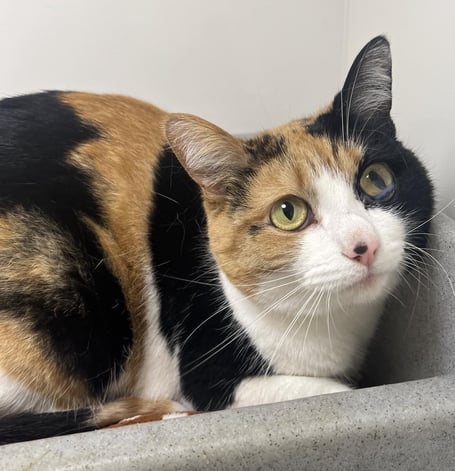A cat’s sense of smell is central to how they perceive the world and is one of their ‘super powers’.
It is their main way of identifying people and your cat will recognise your smell before they recognise your face.
Inside the womb a feline foetus develops odour and taste preferences from their mother’s food choices, and so their sense of smell develops even before they’re born.
Compared to humans and dogs a cat’s nose is dainty and relatively small, but its nasal cavity contains an incredible number of scent receptors – 40 more than humans and three times more than dogs.
This is because cats are continuously processing the world around them based on scent, whether they’re an African wildcat out in the savannah or a pampered moggie in a suburban garden.
Every cat has their own personal ‘signature’ scent made up from a blend of body odours.
It reveals details about their age, reproductive condition, family links, health, mood and much more.
And they can even smell without using their noses because they have a special olefactory receptor, the vomeronasal organ, located in the roof of their mouth.
When you see a cat opening its mouth for no apparent reason, they are likely to be ‘sniffing’ the air.
Cats also use pheromones – potent scents that are released through specialized glands mainly situated around their face (chin, cheeks, forehead, mouth and below the ears).
You will often see a cat brushing surrounding objects with their head, and this is a benign method of marking their territory.
Pheromones are also found in a cat’s urine and an unsettled cat will ‘spray’ both inside and outside the house in an undesirable way of marking territory.
Pheromones communicate a cat’s approach to rivals, potential mates and any other cats who happen to wander through their territory, whether that’s affirming friendliness, disclosing reproductive eligibility, or saying ‘keep away’.
Leaving a scent message is a great ancestral survival strategy that has enabled cats to minimise physical contact and confrontation, and potential injury.
So, why is it important that we understand a cat’s olfactory sophistication?
Because respecting this incredibly important sense helps us to have stress-free, content felines in our homes.
A happy cat will be less likely to soil in the house, scratch furnishings or carpets, or be aggressive towards other pets or humans.
You can create an environment that is sensitive to a cat’s sense of smell by avoiding or reducing the use of heavily perfumed detergents and cleaning products, and being mindful when you use incense, fragranced plug-ins, essential oils and scented candles.
Sadly for six-year-old Bella, stress levels in and around a home can be overwhelming.
In her case, they have caused urinary issues that are now being treated by the use of medication (which she will require for the next six months) and a special diet.
Most importantly, she needs to find a calm, peaceful new environment where there are no other pets or children (or strong smells).
She is used to going outside despite having limited sight in her left eye due to a past injury, and so ideally her new home will have an enclosed back garden.
Bella is a very friendly and affectionate girl, and she is ready and waiting to become a much-loved companion for her lucky new owners. If you think this could be you, please come and meet her any time between 1pm and 4pm, any day apart from Mondays and Thursdays.


.png?width=209&height=140&crop=209:145,smart&quality=75)

